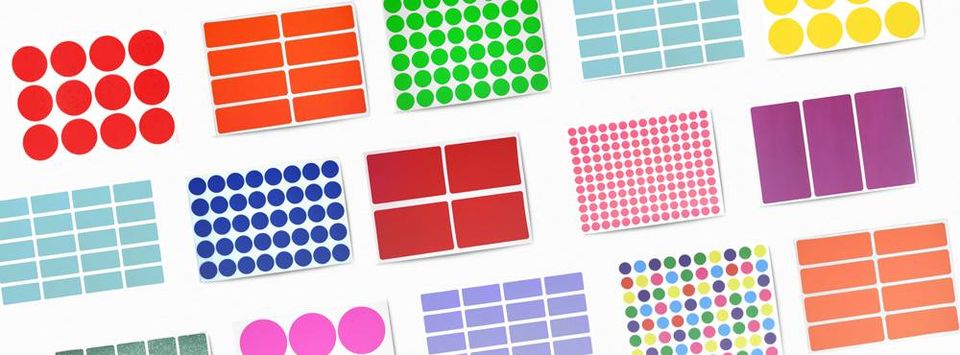Stickers make our daily lives beneficial and more enjoyable with those exciting and captivating colours and adhesive miracles. These ostensibly straightforward products, ranging from colour stickers that can excel or spruce up our personal belongings to coloured dot stickers that help organise and categorise something, pack a powerful adhesive punch.
Has the fact ever pondered how stickers are designed to stick so well, though? Let’s explore the exciting facts of adhesive science and resolve the doubts about how stickers become sticky.
What is the science behind adhesive stickers?
Various types of stickers are available in the market, and all have different purposes. Every sticker has its own distinct space to be attached. A unique mixture of physics and chemistry is the central underlying fact of a sticker’s stickiness.
Today, most stickers come with an adhesive coating with a primary composition of polymers, resins, and tackifiers in a fixed proportion. All these components combined provide a stickiness to the surface where a user intends to stick a sticker.
The stickers may adhere to a vast number of objects, including paper, plastic, iron, and even glass. In order to confirm that the applied sticker should stay firmly over a surface without leaving any residue or stains after removal, the adhesive layer is meticulously designed to strike an effective balance between initial tackiness, adhesion strength, and cohesive characteristics.
The most commonly used adhesive for a sticker is the pressure-sensitive adhesive. This type of adhesive is generated only when a small amount of pressure is applied. It allows the sticker to adhere to a surface. A factor named viscoelastic property makes the adhesive of the stickers.
It also enables the flow and microscopic imperfections on the surface on which it is applied. It helps to create a molecular bond between the surface and the sticker, which anchors it strictly to the surface until a deliberate force is applied.
Role of cohesion and adhesion
Cohesion and adhesion are the two main forces liable for a sticker’s ability to attach to surfaces. Cohesion is the attraction between the sticky layers that help keep the glue intact, and adhesion is the attraction between the adhesive and the surface to which it adheres, enabling the sticker to stick to various substrates firmly. A proper balance of these two forces is required for a proper adherence to the stickers.
Role of Surface Energy
Materials with high surface energy have a high adhesiveness and form strong bonds to the stickers. Whereas lower surface energy needs some specialized tailored adhesive for increasing their adhesion.
Daily Life Applications
From the creative uses of colour stickers to the systematic efficiency of coloured dot stickers, stickers have derived various applications in daily life. Stickers have a wide range of everyday applications, from organizing something to labelling something to providing information or making something visually appealing.
Conclusion
Stickers are considered the show stealer of the adhesive world. They are used to live up to, organise, arrange and personalise our daily stuff. It expressed a world of a careful mixture of physics and cutting-edge chemistry. The time you understand the application of physics behind their stickiness, it will help to explore their applications as well.
Stickers continue to be the first and foremost used tool in our constantly developing environment. Hence, the next time you peel off a sticker, appreciate the underlying science that allows it to stick around and leave a lasting impression.


No comments yet